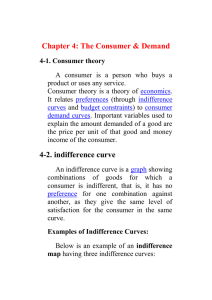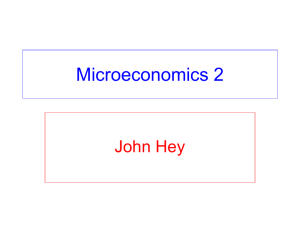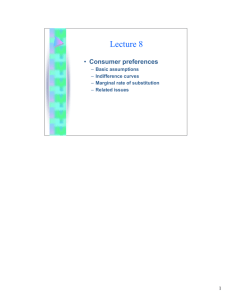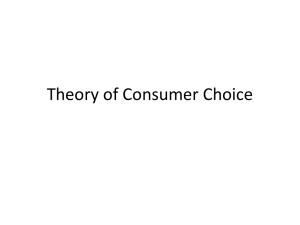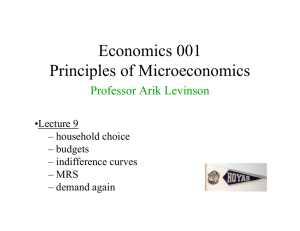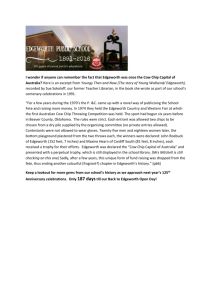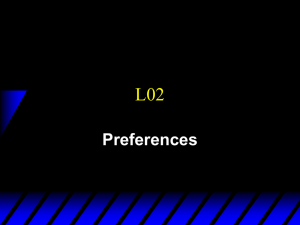Answers to Homework #9
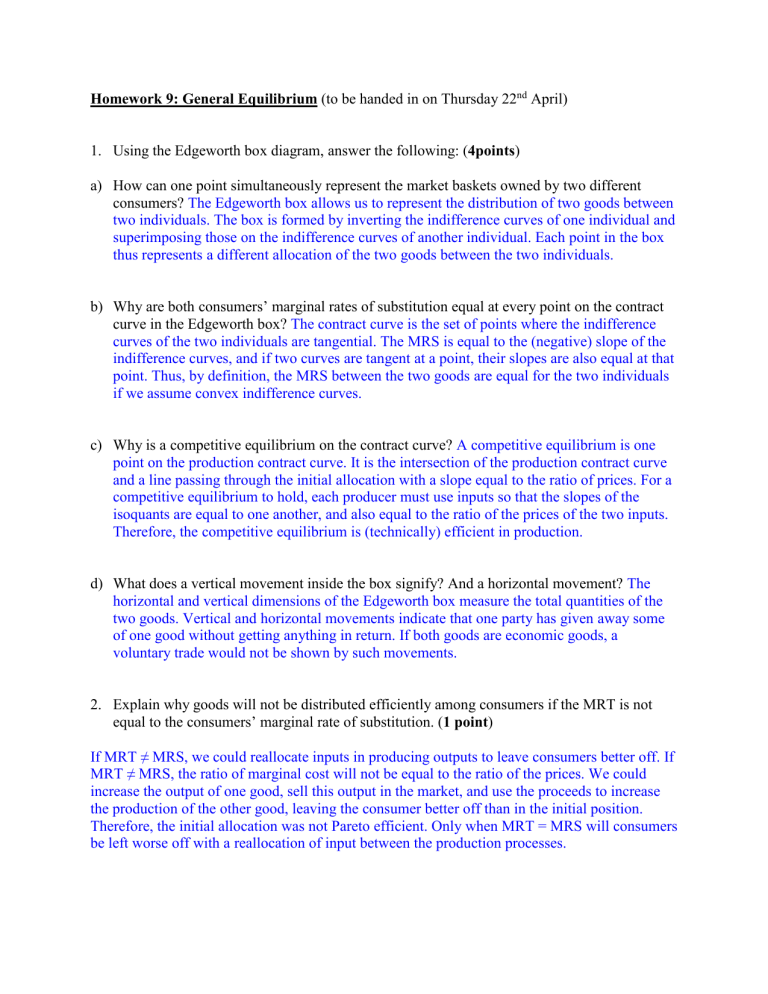
Homework 9: General Equilibrium (to be handed in on Thursday 22 nd
April)
1.
Using the Edgeworth box diagram, answer the following: ( 4points ) a) How can one point simultaneously represent the market baskets owned by two different consumers?
The Edgeworth box allows us to represent the distribution of two goods between two individuals. The box is formed by inverting the indifference curves of one individual and superimposing those on the indifference curves of another individual. Each point in the box thus represents a different allocation of the two goods between the two individuals.
b) Why are both consumers’ marginal rates of substitution equal at every point on the contract curve in the Edgeworth box? The contract curve is the set of points where the indifference curves of the two individuals are tangential. The MRS is equal to the (negative) slope of the indifference curves, and if two curves are tangent at a point, their slopes are also equal at that point. Thus, by definition, the MRS between the two goods are equal for the two individuals if we assume convex indifference curves.
c) Why is a competitive equilibrium on the contract curve? A competitive equilibrium is one point on the production contract curve. It is the intersection of the production contract curve and a line passing through the initial allocation with a slope equal to the ratio of prices. For a competitive equilibrium to hold, each producer must use inputs so that the slopes of the isoquants are equal to one another, and also equal to the ratio of the prices of the two inputs.
Therefore, the competitive equilibrium is (technically) efficient in production.
d) What does a vertical movement inside the box signify? And a horizontal movement? The horizontal and vertical dimensions of the Edgeworth box measure the total quantities of the two goods. Vertical and horizontal movements indicate that one party has given away some of one good without getting anything in return. If both goods are economic goods, a voluntary trade would not be shown by such movements.
2.
Explain why goods will not be distributed efficiently among consumers if the MRT is not equal to the consumers’ marginal rate of substitution. (
1 point )
If MRT ≠ MRS, we could reallocate inputs in producing outputs to leave consumers better off. If
MRT ≠ MRS, the ratio of marginal cost will not be equal to the ratio of the prices. We could increase the output of one good, sell this output in the market, and use the proceeds to increase the production of the other good, leaving the consumer better off than in the initial position.
Therefore, the initial allocation was not Pareto efficient. Only when MRT = MRS will consumers be left worse off with a reallocation of input between the production processes.
3.
a) John has 40 gallons of gasoline (G) and 20 bags of sugar (S). For that market basket,
John’s MRS
SG
is 3G/1S. Maria has 40G and 50S. For that market basket, Maria’s MRS
SG
is
1G/1S. Use a numerical example to explain how a trade can benefit both of them. Illustrate the trade by using an Edgeworth box diagram, showing that both consumers can reach higher indifference curves. ( 2 points ) b) Suppose now that with 40G and 20S, John’s MRS
SG
= 5G/1S. Suppose also that with 40G and 50S, Maria’s MRS
SG
= 1G/1S. If John exchanges nine of his gallons of gasoline for three of Maria’s bags of sugar, both of their MRS
SG
after exchange are 3G/1S. Are they both better off? Illustrate using an Edgeworth box diagram ( 2 points )
4.
Economics suggests that among a choice of different points on a contract curve, a more equal distribution across consumers is preferable to a less equitable distribution. True, false or uncertain? Explain your answer. (1 point )
This statement is false because economists argue that for positive (efficiency) reasons, we should indeed be on the contract curve. But which point is chosen does not matter in terms of efficiency.
Non economic (normative/equity) reasons would focus on where on a contract curve we should be vis-à-vis the distribution of goods across consumers.

